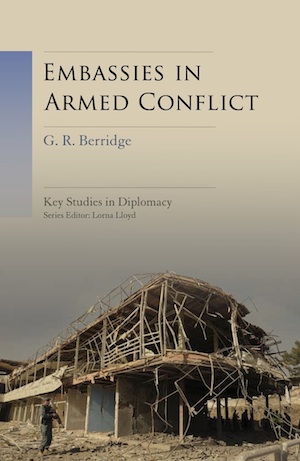Embassies in Armed Conflict
(Continuum: 2012)

Table of Contents
Preface
List of abbreviations used in text and citation
Introduction
1 The Military Component
Defence section
Military advisers
Intelligence officers
2 Embassies in Enemy States
Initial siege
Prompt and dignified departures
Internment pending exchange
Preserving diplomatic relations
3 Neutral Embassies to Belligerents
Helping expatriates
Reporting the war
Commercial work
Protecting foreign interests
4 Belligerent Embassies to Neutrals
Propaganda
Espionage and special operations
Evaders and escapers
Placating the host
Handling peace feelers
5 Embassies to Frontline Allies
In conventional warfare
In low-intensity warfare
The risk of militarization
Conclusion
Appendix 1 Heads of British mission at Kabul, 2001-10
Appendix 2 Appointment of Protecting Powers and of their Substitute: Article 5 of the Protocol Additional to the Geneva Conventions of 12 August 1949, and relating to the Protection of Victims of International Armed Conflicts, 8 June 1977
References
Index


